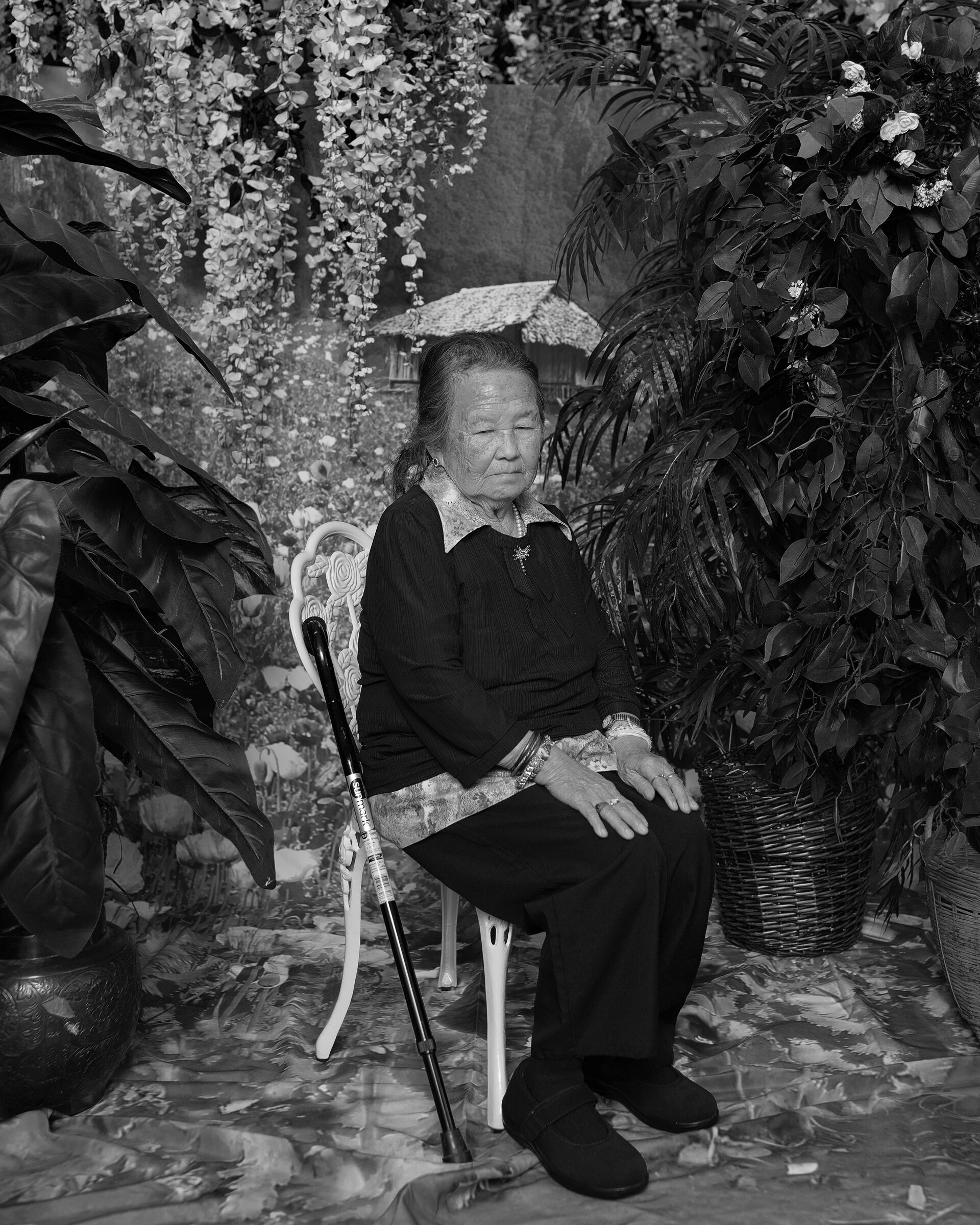Pao Houa Her
“I see each small moment, each new portrait, as a poetic note in a broader, diffuse narrative.”
— Pao Houa Her
Pao Houa Her, the eldest of seven, was born in 1982 and lives in Blaine, Minnesota. The artist’s family is Hmong and her father fought in the Vietnam War. As a child her family moved as refugees to Saint Paul, Minnesota. When Her was young, her father would record folktales to teach her and her sister about their Hmong culture. The artist explains, “These stories introduced me to the emotional power of language—how words can both describe the real world and construct a new, imagined one. I was fascinated by the poetic potential of language . . . .” While in college, Her discovered the narrative possibilities of photography. In 2009, she received a BFA in photography from the Minneapolis College of Art and Design and an MFA in photography from the Yale University School of Art in New Haven, Connecticut, in 2012.
Her’s photographs depict reflections on diverse expressions of identity and diaspora. The artist remarks, “My photography explores how the international Hmong community makes and remakes our collective memory.” The artist makes portrait photographs of Hmong and Hmong American subjects. Some of these photographs consist of constructed settings that include accessories that represent Hmong culture and Southeast Asian climate. The artist states, “My work attempts to break down the larger story of what it means to be a Hmong American into discrete moments in time.” She elaborates, “Through this practice, I learn about my own identity and reimagine my own place within collective memory. I create my own homeland, a place of belonging both real and unreal, an equal product of Hmong history and my imagination.”
Activities
Artist as Observer
How do you communicate changing identities?
Pao Houa Her reflects: “My earliest memories of Thailand, being in the refugee camps, are actually these memories of getting our portraits taken at one of these places. And thinking about it now, and looking at countless studio portraits, for a lot of us it’s a way out of reality, right?” Invite students to take photographs of different moments of their lives for an entire week. Ask them to think about how these images might reflect their changing identities. Have them make a collage that combines the images to represent their cumulative identities.
Artist as Storyteller
How do you narrate a story about identity?
Pao Houa Her recounts that through photography, “I realized how I could use visual language to tell the stories I wish to tell about geography, displacement, sexuality, and beauty.” Have students discuss their multifaceted identities. Encourage them to talk about their interests, and the roles they take on, their backgrounds, cultures, ethnicities, homelands, etc. Ask them to examine how they could express their many-sided selves through art. Have students consider what materials and methods would best suit what they want to communicate about themselves. Invite them to make their artworks.
Artist as Experimenter
How do you create a symbolic self-portrait?
Pao Houa Her explains she places her “subjects in romantic environments full of floral silk, opium-flower patterns, images of the Mekong River, and Southeast Asian mountainscapes.” She adds, “My most recent work moves into more conceptual space, using constructed or staged elements to play with themes of geography and longing.” Have students think about an object, place, or environment that is important to them and says something about their identity. Ask them to consider how they could create a symbolic self-portrait with their choices. Have them reflect on what materials they want to use, the ways they want to compose the elements, and what their arrangements might say about themselves. Invite them to experiment with various artistic means. Display the works and encourage the students to discuss their creative choices.
Artist as Critic
How do you question existing narratives?
“. . . the images I made in Laos and here in Minnesota are about magic, love, illusion, delusion, and most importantly construction with regards to the constructed narrative and the constructed images,” describes Pao Houa Her. Have students think about an issue they might be aware of in their community, country, or the world. Ask them to think about how they could construct a scene (by drawing, creating a diorama, taking a photo, etc.) that would make others aware of this matter of concern. Challenge them to see if they can include in their scenarios possible solutions to these circumstances. Then invite them to put their plans into action with the help of others. If needed, have the students write an artist statement to describe their project and process.
Additional Resources
Bockley Gallery: Biography and photos by Pao Houa Her.
Hyperallergic: Interview with Pao Houa Her.
aint-bad: Interview with Pao Houa Her.

